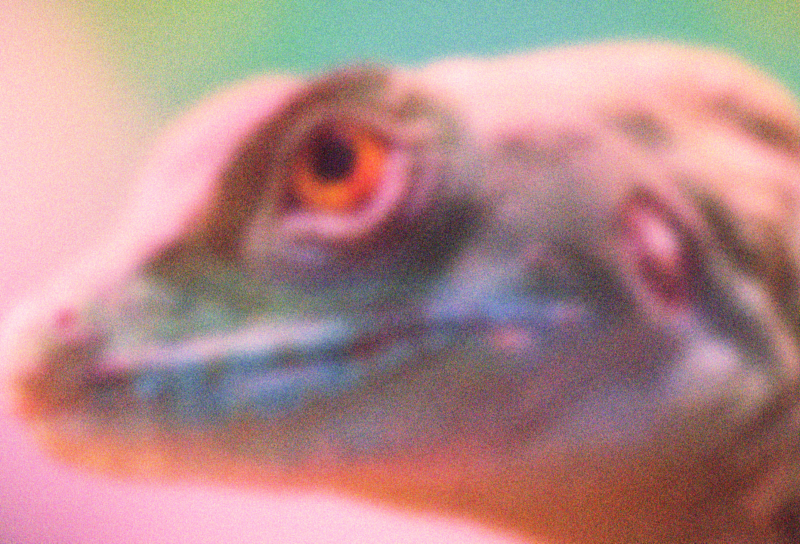You’re on your honeymoon in the year 2100. You sit down for breakfast at your luxury resort and take in the staggering view. The continental breakfast isn’t so different from the one you’ve been served in terrestrial hotels, but it’s not exactly the same, either. Though the fruit is juicy and fresh and the strawberries are locally grown, the servings are limited because the plants here produce fewer blooms. The toast is crunchy, but has an orange hue. It’s been fortified with beta carotene to help your eyesight adapt to the pressure. And while the bacon is crisp, the scrambled eggs fluffy, and the yogurt creamy, they all taste a bit strange. Not bad, just different. They’ve been genetically engineered in yeast to mimic the taste and texture of animal products. You’re not complaining, though. When the view of Earth is this good, the minor divergences are part of the adventure.
If this kind of space tourism is ever to become a common luxury—one of the few visions shared by all space exploration advocates—research and development will have to come a long way. We’re decades away from such capabilities. It remains unclear how we’ll travel there, what materials we’ll need to bring, and which we’ll be able to mine off-world; what we’ll need to learn about setting up systems for agriculture, medicine, and recreational activities; or how long it will take for humans to truly survive and eventually thrive off-Earth. In the meantime, the one guarantee is that the status quo of how space research has been conducted, funded, and operated is unsustainable. In fact, it will soon come literally crashing down to earth.
Currently, the International Space Station is managed through a somewhat complicated system of government and non-profit organizations, all of which have ties to NASA in some way. CASIS, the Center for Advancement of Science in Space, oversees the management of the station and the National Lab, which selects research projects for inclusion in low-Earth orbit on the station, many of which are funded by NASA, academic labs, or are supported in partnership with other national space agencies. But with the retirement of the ISS, a different model will emerge. In 2032, the International Space Station will be decommissioned and fall from orbit into the Pacific Ocean, closing a 24-years-long chapter of hope and international cooperation about science in space. A new era will replace it—one that is reliant not on cooperation between nations, necessarily, but on the optimism of corporate investment.
Soon, more space stations will take the ISS’s place. Axiom Space will launch and attach itself to a couple of the leftover ISS capsules, a process that is already underway. Orbital Reef, a project of Jeff Bezos’ Blue Origin and Sierra Space, hopes to be “the premier mixed-use space station in low Earth orbit for commerce, research, and tourism by the end of this decade.” Northrop Grumman is developing its own free-flying station for “sustainable commercial-based missions,” where organizations share the operating burden. Nanoracks’ Starlab will be deployed in 2027 and will serve research interests around the world through the George Washington Carver Science Park, a research system that uses parallel labs on earth and in space to streamline innovation in biology, plant habitation, physical sciences, and materials, according to their website.
NASA will still fund early-stage research and development for missions to Mars. But rather than remain the gatekeeper of the low-Earth orbit economy, it will be one of many customers, says Patrick O’Neill, a spokesperson for the ISS National Laboratory. O’Neill says that this new model, in which for-profit companies operate research modules in low-Earth orbit, can help NASA redirect government resources toward hard engineering projects, like building rockets to get boots on the Moon and Mars. Companies, meanwhile, can focus on funding the longer-term and financially riskier research—such as synthetic biology for medicine, habitats, and agriculture, on private space stations—with the aim of humans living off-Earth for the long haul.
We now exist in this middle place, between the impending death of the ISS and the birth of the new stations. In the years following the launch of the new space stations, as corporate giants clamor for influence and other countries launch their own missions to space, we must consider what the future of space research should be and how we can ultimately achieve human flourishing off-Earth. Will the future of space science be colonized by the ultra-rich to serve their own interests, or might we be trodding down a more democratic path? The answer will hinge on how we approach funding risky research, create open data sharing, and think carefully about ethics and regulatory infrastructure for space-based societies.
Space Capitalism
Critics of the billionaire space race between Elon Musk’s SpaceX, Jeff Bezos’s Blue Origin, and Richard Branson’s Virgin Galactic, foreshadow a dark imperialist future where a minority of large companies make decisions that, like on Earth, will prioritize profits over human and environmental concerns. These critics believe that if we allow corporate giants to pave the way to the stars, we won’t have any chance at a Star Trek-style off-world utopia. Space advances based on the incentives of an Earth-bound economy, they say, will only project the inequities that already exist on our home planet into space.
But a more optimistic vision for the future of space research is also bubbling up from small space start-ups and radical researchers—disruptors who are coming from outside the traditional realms of academia and government labs. It looks more collaborative, more diverse, more interdisciplinary, and more international.
Research into how humans can live among the stars is scattered across global players, big and small, putting NASA further and further into the rearview mirror. “It’ll be a “Wild West,” says Elizabeth Reynolds, director of the Accelerator Program at space startup incubator Starburst Aerospace. She says that boom-and-bust cycles that have punctuated space research in the past decades—as Congressional funding and public interest ebbs and flows—are stopping. People are excited about space all the time now.
“The truth is that we’re talking about really starting to look at the infrastructure for [living in space]. In the near term, it’ll be 100 people living on Axiom station, but in the not-so-far future, there’ll be more and more people,” she says. We’ll need not just scientists living up there, but people to fill the other roles necessary for a functional society: cooks, cleaners, mechanics, doctors, farmers, and so on.
And who would be financing all this research? The start-up and VC arena for space research and exploration has expanded explosively, says Reynolds. “There’s been a 10x increase in capital being put into space startups specifically. It’s a really rapidly changing landscape.”
Private interests no longer need a NASA or European Space Agency partnership to get funding to get to space. The number of space startups has been quietly growing, driven mostly by privately funded small-scale investments, including in countries that haven’t traditionally been seen as being on the cutting edge of space exploration initiatives, including Argentina, Latvia, and others with developing economies.
“There will be more opportunities for riskier projects that support rich, human expression in space. We will go from covering the bare minimum requirements to survive to having a real society or real culture in space.”
According to space policy analyst Wendy Whitman Cobb, the cost of doing business in space has decreased by billions of dollars since SpaceX entered the scene in the early 2000s. SpaceX’s success has cratered the cost of sending payloads to space, and as more large, private companies enter the space and open up shop (and labs), the cost of research and development will continue to drop. As a result, the research is more focused, and there is immensely fertile ground to grow the space economy, including for tourists and non-establishment researchers, outside of academia, government, and large corporations.
Plummeting prices could have a democratizing effect on space research. “There is criticism recently about space research becoming a toy for the billionaires, and in a way that’s happening, but I think we’re going to see a democratization impact, beyond the billionaires,” says Pat Pataranutaporn, a researcher at MIT’s Space Exploration Initiative. “As [access to space research] expands, we are going to have more citizen science projects with space exploration.” We might see funding for interdisciplinary independent projects like bioart that enhances flavors and aromas in space, or lunar architecture that takes human psychology into account.
Pataranutaporn explains that we’re seeing a shift in research capacity and creativity similar to the history of the web. The internet was originally used primarily for military and government applications before the DotCom creative boom of the 1990s and the Silicon Valley app explosion of the late 2010s. For decades, space research has focused on government applications and the very basic necessities of staying alive in space, such as life support systems, hardware, and very basic dried food. Corporations have the money and risk-tolerance to get more creative.
“There will be more opportunities for riskier projects… that support rich, human expression in space,” says Pataranutaporn. “We will go from [covering the] bare minimum requirements to survive to having a real society or real culture in space.”
Synthetic biology will play a critical role in this advancement, he says; from how we grow real food, to developing biofabrics, to other colorful things that are necessary for humans to be happy when they go to space. We’re just now at the precipice of this creative research, with NASA recently investing minimally in food and lifestyle projects. But Pataranutaporn wonders, “How do you grow Thai food in space? Or how do you allow for a whole new type of cuisine to emerge in space?” Corporate funders will be more willing than NASA has ever been to utilize advancements in synthetic biology that will address what we need for human flourishing, not simply sustaining life.
“It’s powerful,” he says. “We’re not just going to take things from Earth. We want to be able to produce things as we go into space.”
Opportunities for a Renaissance
We are not built for space. Our bodies evolved to live comfortably in the familiar embrace of Earth’s gravity and warmth. But if humans are to spend long periods of time up there, whether it’s doing research in low-Earth orbit fifteen years from now or setting up a farm on Mars thirty years later, or waiting tables in one of moon’s multiple tourist resorts in the year 2170, we will need to learn more about how various kinds of technology could be used to enhance the human body’s capacity to be healthy off-Earth.
Part of Pataranutaporn’s work at the MIT Media Lab involves bio-cyborg research, including a project that uses wearable biotechnology to monitor and respond to health issues in space. The WearableBioFab is a proof of concept idea that would grow genetically modified bacteria that can produce molecules to enhance astronauts’ health—on their actual bodies.
Pataranutaporn’s ultimate vision is to be able to create a multiplex genetic circuit, so that in the future, the bacterial cell will contain multiple plasmids or multiple pathways for producing multiple molecules. Then, an attached sensor will use digital signals to trigger whatever kind of molecule needs to get produced to address the health issue. The idea is that the bacteria on the body can be controlled digitally, like a software update, to produce the pharmaceutical molecules the astronaut needs.
As another example of augmentation biotechnology, somatic genome editing, which uses gene splicing technology like CRISPR to edit or augment the human genome, will likely be highly useful in space. Might we want to find engineered solutions to the eyesight and bone density problems we know plague humans in space? This GMO lettuce and bread might help. What about tweaking our genes to better absorb vitamins so that we can eat fewer oranges (hard to grow in space) but still maintain adequate levels of Vitamin C? Weill Cornell genomics professor Chris Mason has suggested that genetic engineering will be necessary in his “500 Year Plan.”
With human research comes, inevitably, questions about laws and ethics, especially when the research in question has to do with making little tweaks here and there so that we can comfortably exist somewhere besides our home planet. The direction of the emerging space economy will depend on how we deal with the questions around experimenting on humans in space, and space law has yet to catch up. Space law regulates research based on the 1967 Outer Space Treaty and institutional Earth-based rules. Because most research on the ISS is being done by academic and government scientists who generally adhere to more stringent oversight rules from their home institutions, we haven’t encountered major ethical issues with human subjects research in space—at least, so far.
The regulations in the Outer Space Treaty agreement say that countries are responsible for the spacecraft launched from their territories, as well as how their citizens behave in space. Also, countries (and therefore corporations led by their citizens) can’t put weapons of mass destruction in space, which may cover bioweapons. But space law isn’t perfect. Experts question how human subjects research will be managed outside government hands.
Michelle Hanlon, an expert in space law and the Co-Director of the Air and Space Law Program at the University of Mississippi School of Law, notes that human subject research in corporate space stations is an area where there aren’t yet concrete norms for what will be acceptable and there are still issues to be worked out.
On Earth, regulators like the FDA or EMA currently play an outsized role in regulation of human subjects research, including for genome editing, because most of this research is for therapeutics targeted for the consumer market. But is that still the case in space? What oversight body would be involved if a private company signed up private volunteers for a genetic enhancement experiment that might make life in space easier on a private lunar base or space station? For example, the FDA does not oversee biohackers or self-experimentation. Projects that are not meant to be sold to consumers and which don’t cross state lines for commercial purposes aren’t technically under the purview of federal regulators. Research around human enhancement for space likely won’t be any different.
“People are much more open to genetic modification when it’s in space than they are when it’s terrestrial.”
In a conceivable future where space research is primarily funded in-house and scientists work directly for the companies without a pathway to the consumer market, there is no roadmap for norms about genetic engineering of humans in corporate space.
“When you talk to people in the space community, thinking about genetic modifications, people are much more open to it when it’s in space than they are when it’s terrestrial,” says Hanlon. Although she adds, while there may be comfort with the idea because genetic engineering for space seems inevitable, many ethical issues arise, including risks to the health of astronaut research subjects, contamination of ecosystems beyond Earth, use of scientific discoveries in space for military applications at home, and many other ethical questions.
Of course, data about human subjects research will also be useful for scientists who are interested in sending human experiments to space. NASA is not generally forthcoming about sharing human data with the public, however, some companies seem more willing to share their data and make it available to others.
Axiom’s AX-1 mission, which launched in April and was the first all-commercial crew aboard the ISS, works with the Weill Cornell Medical Center on human microbial research in space. Mason, the genomics professor who leads the partnership, says that Axiom plans to release all their human research and champions open data and data sharing practice. If this trend holds across the industry, it would make it easier for more scientists to launch human subjects experiments.
“They want to release all the data, and all the methods,” says Mason, who collaborates with both NASA and private companies on research on humans in space. “It’s nice to see for-profit companies being really forthright and pushing the boundaries of sharing. I’d love seeing more of this model.”
Survive or Thrive?
How do we get to this era of space where the economy is booming, where there’s a pizza parlor on Mars, and where we use synthetic biology to grow habitats from mycelium? Hanlon thinks the answer is simply more corporations conducting transparent research in space and not burdening them with too much regulation. And while Hanlon says the US has some of the most robust regulations of any country on earth when it comes to space and safety of space activities, the US won’t be alone up there.
Hanlon believes we need to build capacity, not just for space technology, but for flexible and appropriate space law, so that we don’t have a race to the bottom just when the sector is taking off. As a member of the United Nations Committee on the Peaceful Uses of Outer Space and the United Nations Office of Outer Space Affairs, Hanlon says her colleagues are working internationally to build that capacity. She’s motivated by lessons from mistakes with remote sensing technology, which, she says, was wildly over-regulated.
“We nearly killed our remote sensing industry by placing really strict guidelines and regulations on remote sensing operators [in space] because we were worried about national security. And it opened the window for a lot of non-US companies to grow,” says Hanlon. “We don’t want to kill an industry by being overzealous, and yet, we have to be incredibly careful. It’s a real fine line for our space community. Because, yes, we want to be responsible, but you can’t make us so responsible that we can’t compete.”
Likewise, Elizabeth Reynolds believes that we must begin to consider the space research economy part of the world’s global infrastructure.
“We are going to continue to see a giant spike in development,” she says, and it won’t just be billionaires hitching rides to the space stations. “A lot of technology, as it starts out, is only accessible to the very wealthy, and then it really slowly becomes more affordable and more accessible.”
This idea of accessibility, democratization, and open data will help bridge the gap between the near and far future visions for research in space. It’s what will make life in space sustainable, says Reynolds. “How do we maintain an environment that not only lets you survive, but thrive?”



